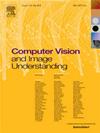Unsupervised co-generation of foreground–background segmentation from Text-to-Image synthesis
IF 4.3
3区 计算机科学
Q2 COMPUTER SCIENCE, ARTIFICIAL INTELLIGENCE
引用次数: 0
Abstract
Text-to-Image (T2I) synthesis is a challenging task requiring modelling both textual and image domains and their relationship. The substantial improvement in image quality achieved by recent works has paved the way for numerous applications such as language-aided image editing, computer-aided design, text-based image retrieval, and training data augmentation. In this work, we ask a simple question: Along with realistic images, can we obtain any useful by-product (e.g. foreground/background or multi-class segmentation masks, detection labels) in an unsupervised way that will also benefit other computer vision tasks and applications?. In an attempt to answer this question, we explore generating realistic images and their corresponding foreground/background segmentation masks from the given text. To achieve this, we experiment the concept of co-segmentation along with GAN. Specifically, a novel GAN architecture called Co-Segmentation Inspired GAN (COS-GAN) is proposed that generates two or more images simultaneously from different noise vectors and utilises a spatial co-attention mechanism between the image features to produce realistic segmentation masks for each of the generated images. The advantages of such an architecture are two-fold: (1) The generated segmentation masks can be used to focus on foreground and background exclusively to improve the quality of generated images, and (2) the segmentation masks can be used as a training target for other tasks, such as object localisation and segmentation. Extensive experiments conducted on CUB, Oxford-102, and COCO datasets show that COS-GAN is able to improve visual quality and generate reliable foreground/background masks for the generated images.
从文本到图像合成的无监督前景-背景分割协同生成
文本到图像(T2I)合成是一项具有挑战性的任务,需要对文本域和图像域及其关系进行建模。近年来,图像质量大幅提高,为语言辅助图像编辑、计算机辅助设计、基于文本的图像检索和训练数据增强等众多应用铺平了道路。在这项工作中,我们提出了一个简单的问题:除了现实图像,我们能否以无监督的方式获得任何有用的副产品(如前景/背景或多类分割掩码、检测标签),从而使其他计算机视觉任务和应用受益?为了回答这个问题,我们探索从给定文本中生成真实图像及其相应的前景/背景分割掩码。为此,我们尝试将协同分割概念与 GAN 结合使用。具体来说,我们提出了一种名为共分割启发 GAN(COS-GAN)的新型 GAN 架构,该架构可同时从不同的噪声矢量生成两幅或多幅图像,并利用图像特征之间的空间共关注机制为生成的每幅图像生成逼真的分割掩码。这种架构有两方面的优势:(1) 生成的分割掩码可用于专门聚焦前景和背景,以提高生成图像的质量;(2) 分割掩码可用作其他任务(如物体定位和分割)的训练目标。在 CUB、Oxford-102 和 COCO 数据集上进行的大量实验表明,COS-GAN 能够提高视觉质量,并为生成的图像生成可靠的前景/背景掩码。
本文章由计算机程序翻译,如有差异,请以英文原文为准。
求助全文
约1分钟内获得全文
求助全文
来源期刊

Computer Vision and Image Understanding
工程技术-工程:电子与电气
CiteScore
7.80
自引率
4.40%
发文量
112
审稿时长
79 days
期刊介绍:
The central focus of this journal is the computer analysis of pictorial information. Computer Vision and Image Understanding publishes papers covering all aspects of image analysis from the low-level, iconic processes of early vision to the high-level, symbolic processes of recognition and interpretation. A wide range of topics in the image understanding area is covered, including papers offering insights that differ from predominant views.
Research Areas Include:
• Theory
• Early vision
• Data structures and representations
• Shape
• Range
• Motion
• Matching and recognition
• Architecture and languages
• Vision systems
 求助内容:
求助内容: 应助结果提醒方式:
应助结果提醒方式:


